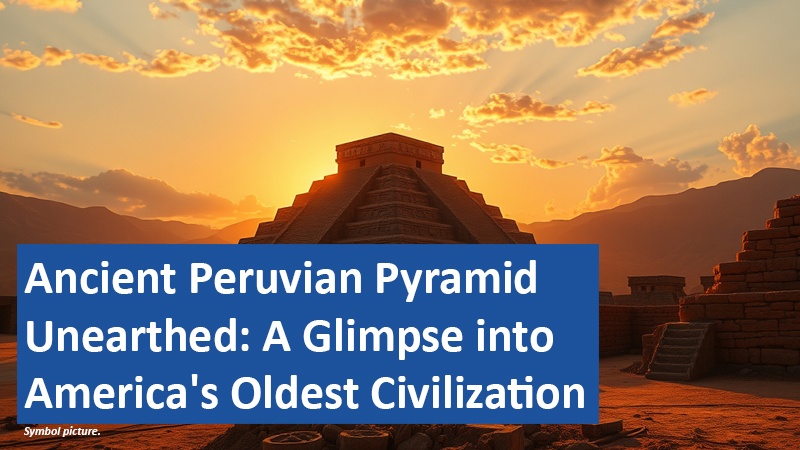
In a groundbreaking discovery, archaeologists have uncovered a previously unknown pyramidal structure near the Sacred City of Caral-Supe in Peru. This find sheds new light on one of the oldest urban societies in the Americas, dating back approximately 5,000 years.
Discover the best deals on Amazon now!
Unveiling the Hidden Pyramid
The newly discovered pyramid, located just one kilometer west of Caral-Supe, was concealed beneath dense vegetation, including dry huarango trees. Upon clearing the foliage, researchers revealed stone walls forming at least three overlapping platforms in a pyramidal shape. The structure features vertically placed massive stones, known as “huancas,” which mark the building’s corners and central stairway. These stones held sacred significance for ancient civilizations and were often associated with rituals and offerings.
Chupacigarro: A Thriving Ancient Settlement
The pyramid is situated in a small ravine that belongs to the ancient settlement of Chupacigarro. This site, along with Caral-Supe, is part of a larger network of archaeological settlements in the Supe Valley, all belonging to the Caral civilization that flourished between 3000 and 1800 BCE. The discovery has led experts to hypothesize the existence of a small urban settlement that once thrived in the area.
Strategic Location and Cultural Exchange
Chupacigarro’s location proved strategically important for connecting populations in the lower Supe Valley with coastal communities in Huaura. This positioning facilitated the exchange of marine products and likely contributed to the settlement’s prosperity. The intricate urban planning and architectural innovations observed in Chupacigarro and Caral-Supe influenced subsequent Andean cultures, showcasing the far-reaching impact of this early civilization.
Expanding the Archaeological Landscape
Under the leadership of Dr. Ruth Shady, the research team plans to conduct comprehensive mapping of the entire site. Their efforts have already yielded additional fascinating discoveries, including a geoglyph depicting a head, measuring 62.1 × 30.3 meters, visible only from a strategic point within the ancient Chupacigarro settlement.
This remarkable find not only enriches our understanding of the Caral civilization but also reinforces its status as one of the oldest urban societies in the Americas. As excavations continue, archaeologists anticipate uncovering more secrets from this ancient world, potentially revolutionizing our knowledge of early American civilizations.
What other hidden wonders might be waiting to be discovered in the Supe Valley? How might these findings reshape our understanding of the development of early urban societies in the Americas?
Based on content from www.futurzone.de and own research.